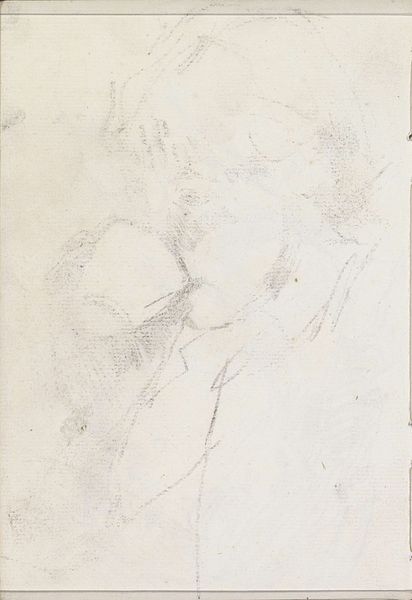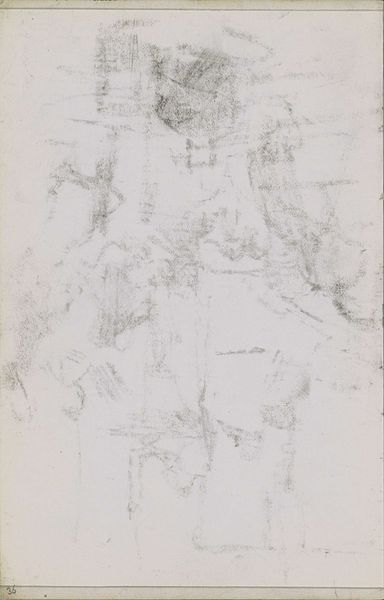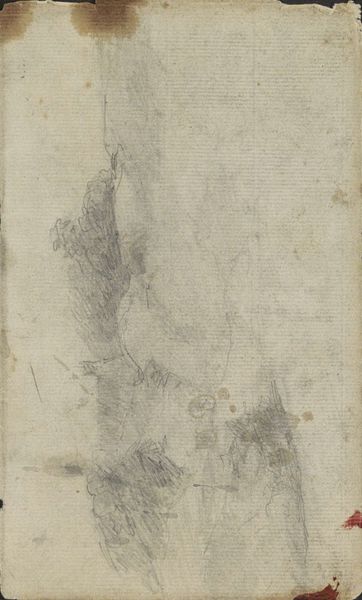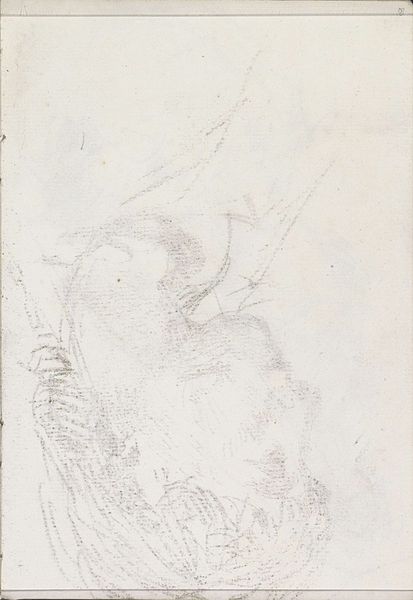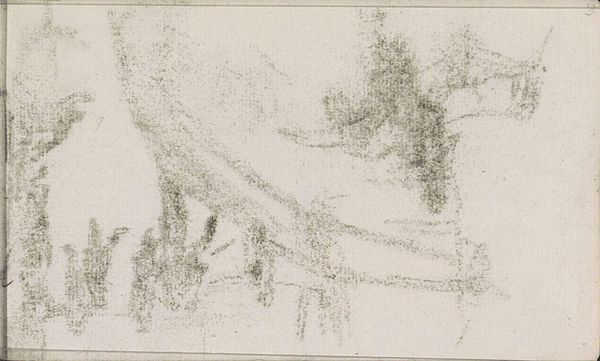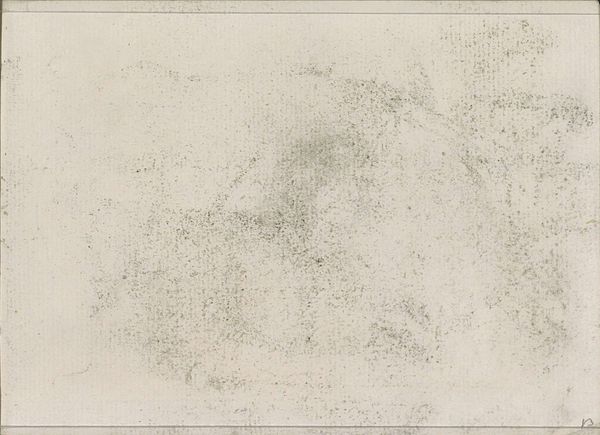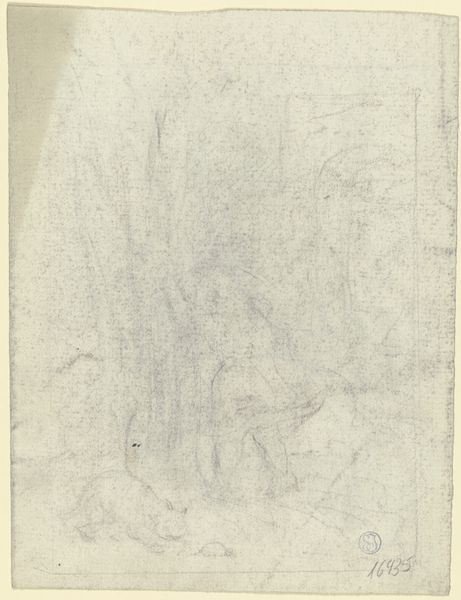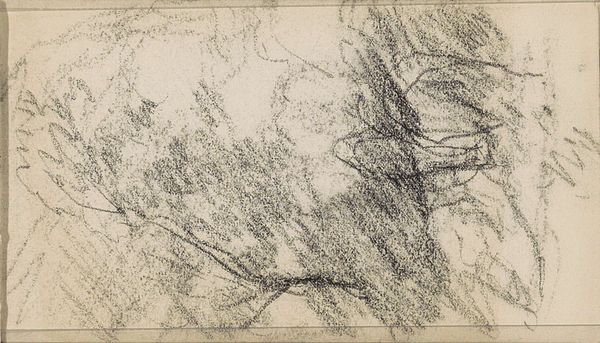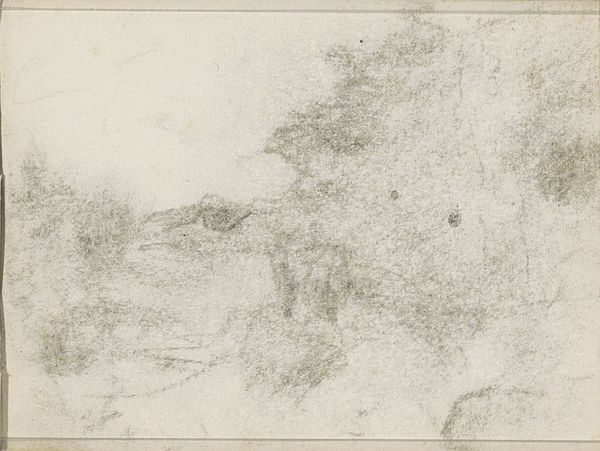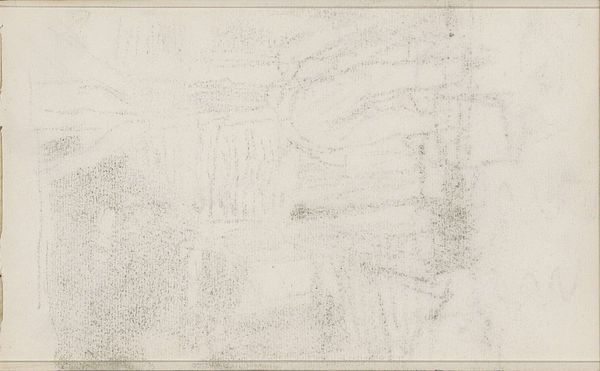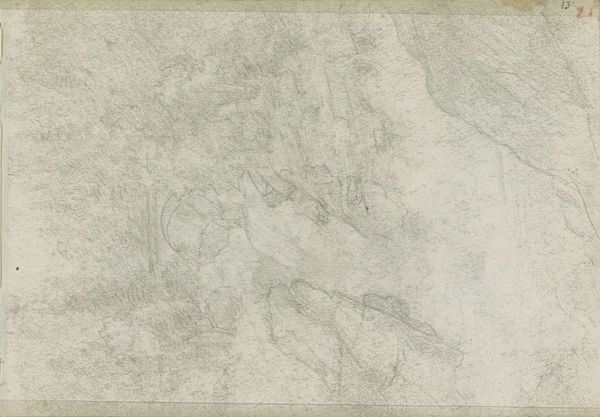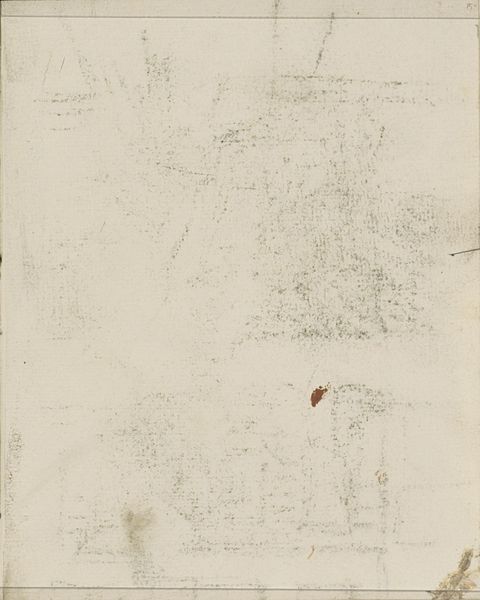
drawing, paper, pencil
#
drawing
#
paper
#
pencil drawing
#
pencil
#
abstraction
#
modernism
Copyright: Rijks Museum: Open Domain
Editor: So, this is "Abklatsch van een krijttekening," or "Print of a Chalk Drawing," made between 1875 and 1934 by Isaac Israels. It’s a pencil drawing on paper and… it’s quite faint. There’s this ghostly quality to the lines, almost like an echo. I'm wondering, with a piece this abstract, how do we even begin to interpret its significance? Curator: That’s an excellent question. Its apparent "faintness" isn't a deficiency, but a window into the changing role of art in the late 19th and early 20th centuries. The title itself – “Print of a Chalk Drawing” – calls attention to the processes of reproduction and dissemination. It’s almost like Israels is questioning the uniqueness and aura of the original artwork. What do you think the social impact of making an art piece readily available like this, might have? Editor: It's like he is mass producing it in some sense, or trying to make a traditional style accessible? Curator: Exactly. This shift was part of a broader trend where art was increasingly consumed not just by elites in galleries, but also by a growing middle class through printed media. Artists like Israels were navigating this tension between traditional art and its reproduction for a wider public. By presenting what seems like a mere trace, Israels is forcing us to confront what we value in an artwork. Is it the skill of the hand, or the idea itself? Editor: So the “unfinished” aesthetic is less about lacking detail and more about prompting us to question what art *should* be showing or doing in society? Curator: Precisely! And that interrogation of artistic conventions reflects the socio-political shifts of the time. As new technologies emerged and class structures evolved, artists were compelled to rethink their roles and purposes. This “ghostly” drawing is a powerful statement on the changing landscape of art and its relationship to society. Editor: I see, so it's not just a faint drawing, it's a commentary! Thanks for clarifying, I see a whole different piece now. Curator: And I appreciate your curiosity in understanding that perspective. Together, we can discover new ways of perceiving art’s value within specific communities.
Comments
No comments
Be the first to comment and join the conversation on the ultimate creative platform.
